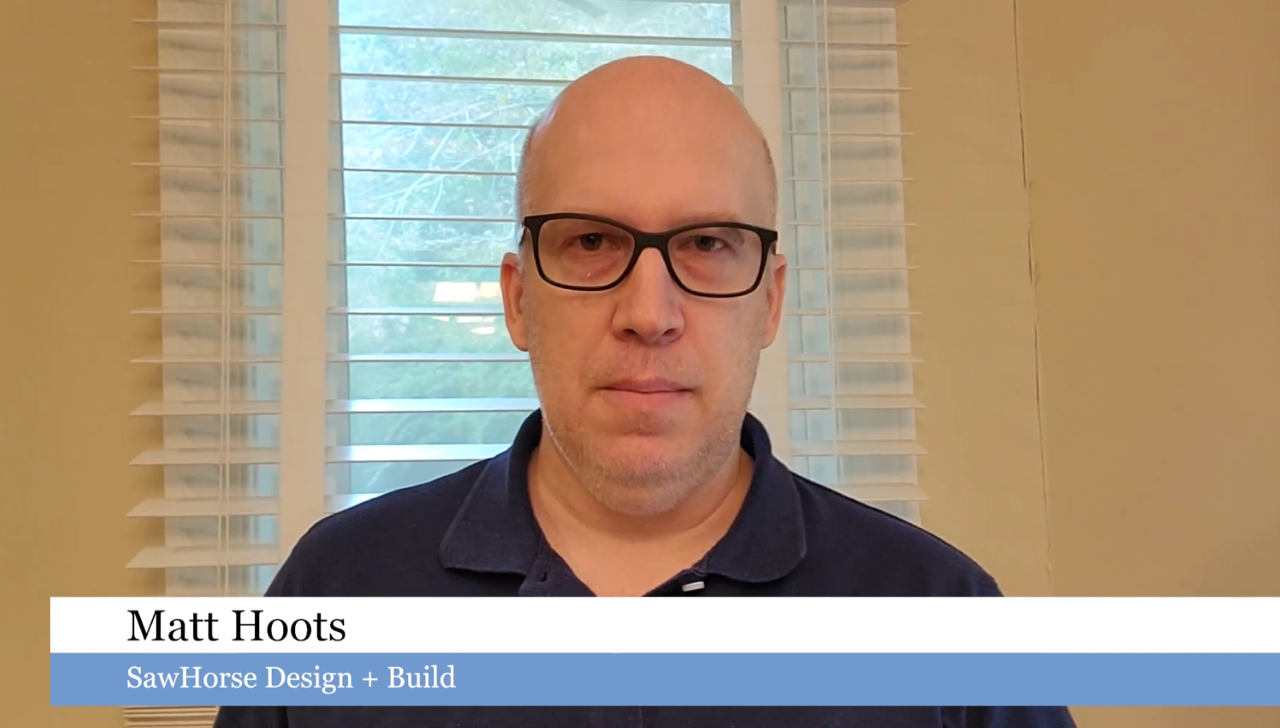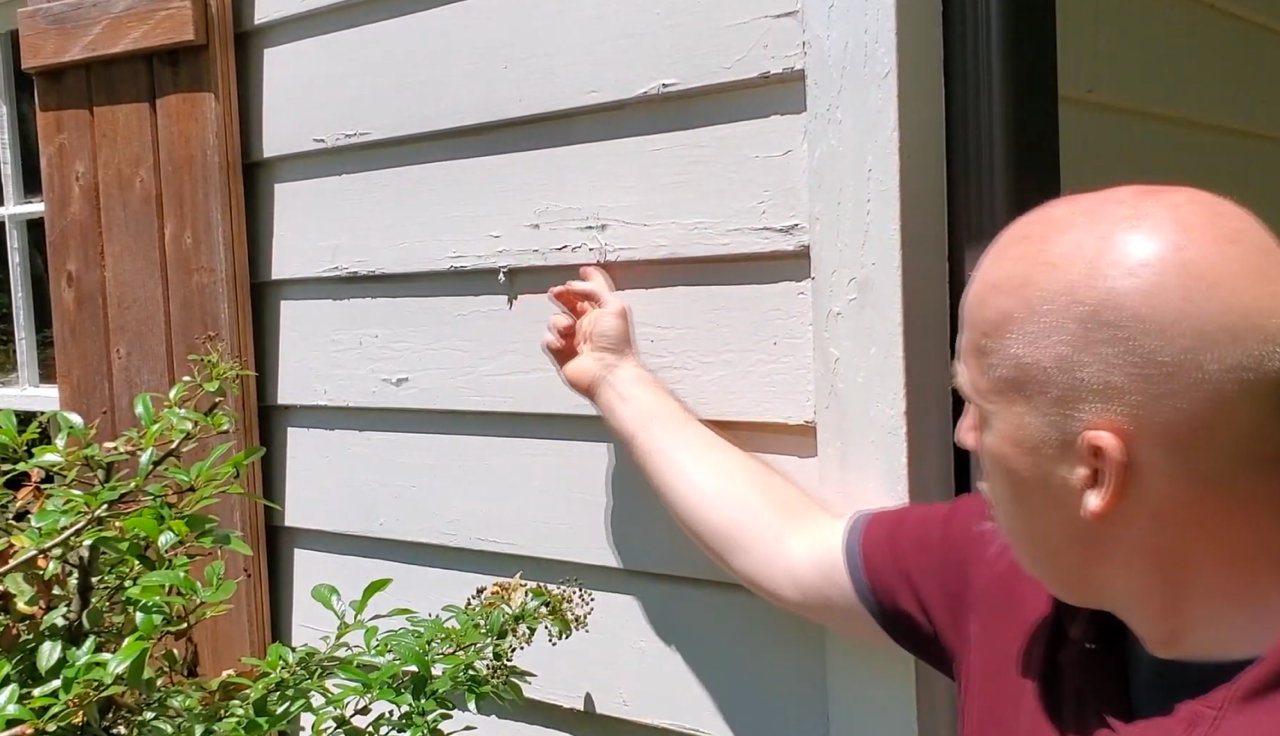Green Building Community
Paint and Drywall Moisture Failures Due to Improper Caulking - Prevention, and Solutions
Posted by: Rate It Green Team
What can can pass through your walls with ease, and cause all kinds of problems, but is not a ghost? There is more than one possible answer actually, but for this next installment in our “Scary Building Stories,” we’re talking about water vapor. Due to the damage water vapor can cause, some people might actually prefer a supernatural visitor….

In this video, Green Builder Matt Hoots reports from a client’s home and gives two examples of moisture issues that resulted from improper paint prep. The intent is not to poke fun at painters or DIYers but to use these situations to help educate everyone on some basic building concepts and what not to do. We can all learn something about how and why to prevent this situation, and we can review existing solutions or work together to figure out some new solutions. Those of us who have been through a similar situation can of course also empathize or commiserate.
.jpg)
Example 1: Caulking the Underside of Hardie Plank
In Matt’s first example, his clients called him in as they had noted moisture issues with their drywall and flooring inside the home. The moisture in one wall was elevated, though the rest of the house seemed at acceptable levels. But the problem was on the outside of the home which has recently been painted. When the painters caulked the sides of the fiber cement siding, they had also caulked the bottom of the lap boards.
Lap siding is made up of long flap boards deliberately overlapped to drain water away from the house. An unsealed horizontal lap board allows moisture that gets trapped behind the siding or in the wall assembly to dry out. During the winter months, water vapor migrates through the wall from the inside to the exterior so the siding needs to breathe to let the water escape.
The good news is that this problem has a relatively simple problem on the outside, aside from repairing the damaged drywall. The extra seal can be broken with a utility knife, so the water will now be able to drain as intended. This works as the paint was not compromised.

Example 2: Caulking the Underside of Painted Wood Siding (that was also not fully primed)
The second homeowners weren’t as fortunate as the paint on their house peeled. In this case, it also does not seem like the home was primed properly. All six sides of the wood must be fully covered so that water doesn’t infiltrate and put pressure on the paint. But the damage also resulted from sealing at the bottom of the wood siding, also arranged in lap boards. Here, the moisture is getting trapped inside the wall, as it can’t escape through the siding as the home is not well ventilated. The water can’t penetrate the walls, so it’s trying to find a path back outside, causing issues with the paint. The key: moisture that gets in these boards has to have a way to get out. These homeowners will have to get a new paint job which means removing the caulking, replacing rotted siding, and then reprime and repaint.
Once the damage is done, it of course costs money and has a greater impact on the environment than if we had prevented the problem in the first place. There’s a good reason for all of us to share these stories, so others don’t have to go through the same experience.
What unfortunate or tough building challenges have you faced or observed? What did you to do or would you recommend to solve these challenges? What can others learn from your experiences and expertise? What questions do you have about difficult building conditions, projects, or situations? Add your voice - and story!
Green building products and practices can help prevent moisture problems
Matt mentioned that many of the things he learned from green building programs helped him to be able to renovate and build without these issues. Here are some of the pointers that many green building programs recommend:
-
If you use paint-grade wood in a wet climate- prime all six sides, including the ends. This will prevent moisture from getting into the wood and affecting the paint.
-
Both fiber cement and wood need to be primed before painting. Fiber cement does have organic material in it which means that it can mold if not sealed properly. Many manufacturers do “factory seal” the product before it is sold so you just need to paint it once it is installed. Some manufacturers pre-paint the siding as well so you only have to caulk it after it is installed.
-
Installing a “rain screen” allows air movement behind the siding which accelerates the drying process. Any trapped moisture can cause problems to the siding and the structure if it does not dry out quickly.
Thanks to Matt Hoots of Sawhorse, Inc. for answering the call for Scary or Spooky Building Stories. We asked of this content playfully in October as it’s Halloween season in many parts of the world, but we’re actually quite serious about the idea of sharing worrisome building-related experiences and conditions. What lessons can we learn from each other to help other people and companies avoid the negative experiences we’ve been through, and what solutions can we share to all move forward together to a time when we all live, work, and play in more sustainable and healthier buildings? This is what building community is all about.
Please be kind and respectful!
Please make sure to be respectful of the organizations and companies, and other Rate It Green members that make up our community. We welcome praise and advice and even criticism but all posted content and ratings should be constructive in nature. For guidance on what constitutes suitable content on the Rate It Green site, please refer to the User Agreement and Site Rules.
The opinions, comments, ratings and all content posted by member on the Rate It Green website are the comments and opinions of the individual members who posts them only and do not necessarily reflect the views or policies or policies of Rate It Green. Rate It Green Team Members will monitor posted content for unsuitable content, but we also ask for the participation of community members in helping to keep the site a comfortable and open public forum of ideas. Please email all questions and concerns to admin@rateitgreen.com

